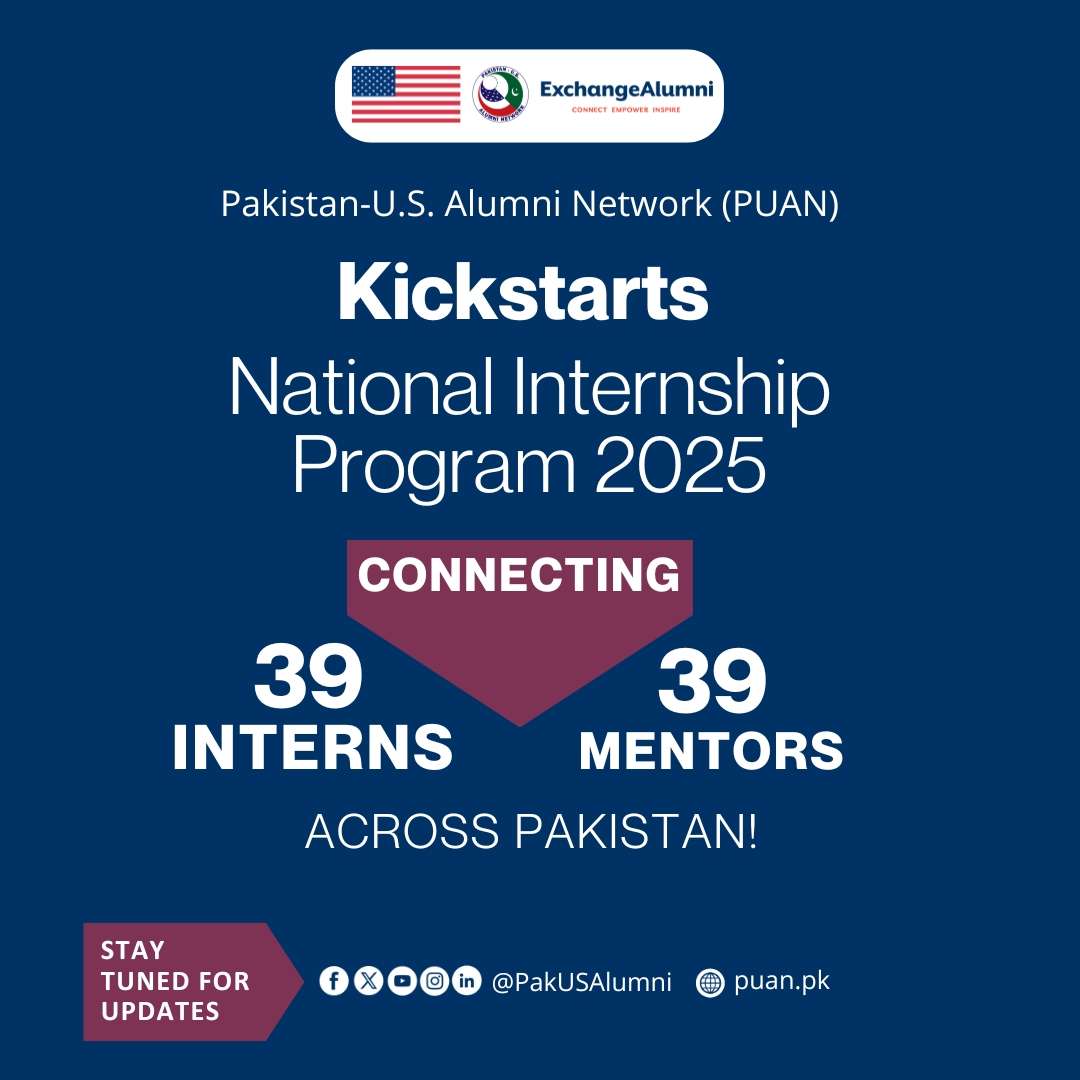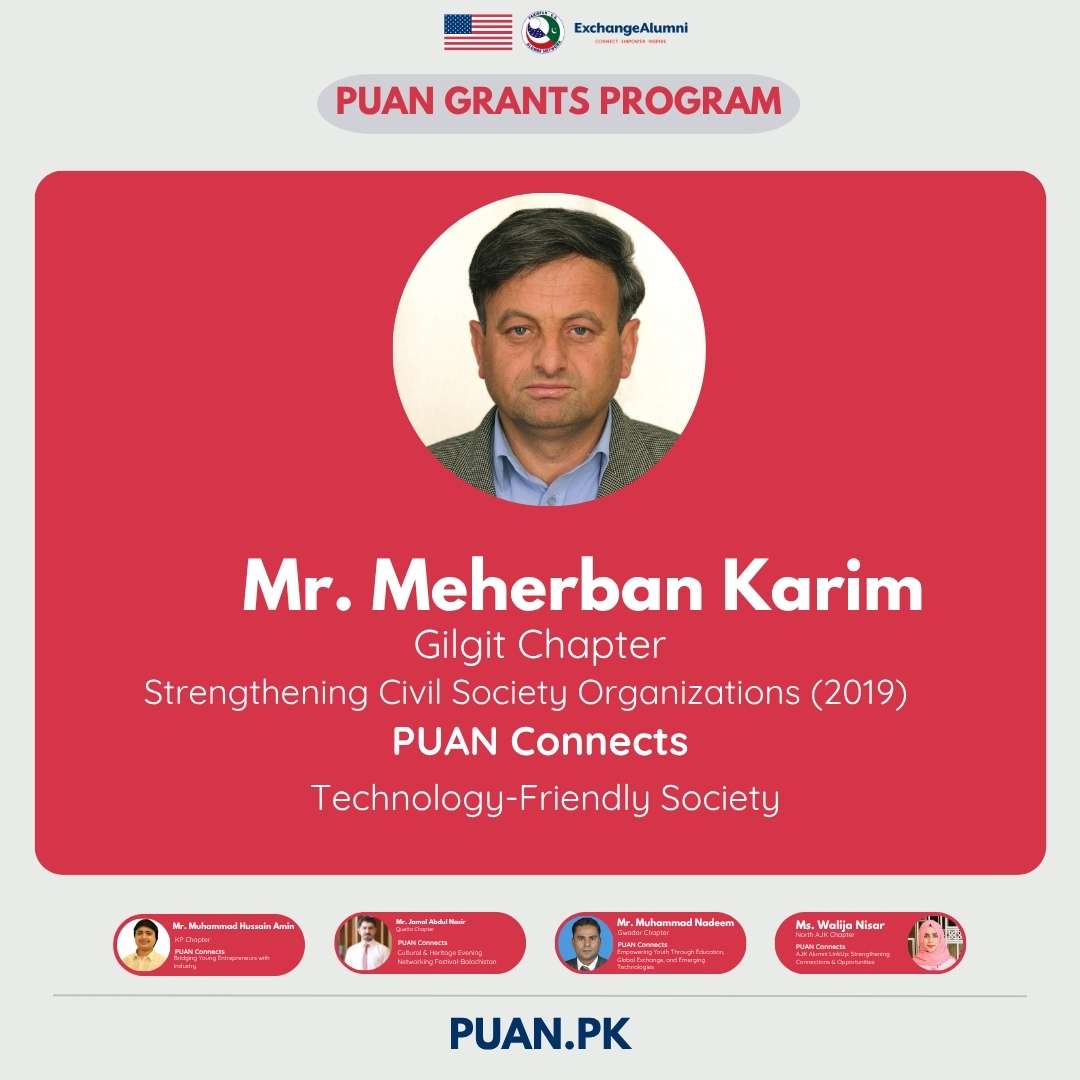By Hira Nafees Shah

College student Mohammad Kashif woke up at seven o’clock each morning during his summer vacation. Being from the Hyderabad area of Hunza, he spent over one-and-a-half hours traveling to Karimabad each day.
Kashif embraced the long ride and gladly gave up extra sleep to pursue his dream of becoming a journalist.
“I want to pursue journalism as a profession, that’s why I travel everyday from Hyderabad,” he said. “It has been an awesome experience which has exceeded my expectations.”
Kashif and a group of 44 other participants were selected out of scores of applicants to take part in a unique training with the Alumni Engagement Innovation Fund (AEIF) program “Youth Eye-Citizen Journalist.” The two-week course promised to provide the students with all the ropes of video story-telling and included many active female participants.
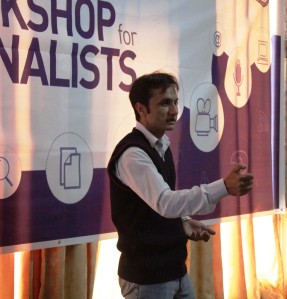
Amin Muhammad, a Community College Initiative Program alumnus, launched the pilot project in November 2013, in three towns of central Hunza valley — Baltit, Altit, and Hyderabad. Baltit Rural Support Organization, Hyderabad Local Support Organization and Altit Local Support Organization stepped in to provide community ownership for the endeavor.
“I felt that trained human resource in the media sector is very limited in Gilgit Baltistan,” said Muhammad. “I also wanted to highlight tourism, cultural diversity and the different traditions that we have in this region, so that Pakistan’s image can be changed in a positive way.”
The alumnus added that he was motivated by his exchange program in Madison, Wisconsin, where he worked with community access television stations. Youth Eye is intended to pass his learning to the community that he grew up in. He also expressed his opinion that the issues of Gilgit Baltistan region have long been ignored by traditional media outlets in Pakistan.
The U.S. Department of State administers the AEIF grant which funds proposals submitted by U.S sponsored exchange alumni in ten key areas including Freedom of Expression.
“The AEIF is a global platform and projects are selected on open competition,” said Muhammad. “$25,000 is also a handsome amount to create positive impact within the community.”
Students Learn Video Story-Telling:
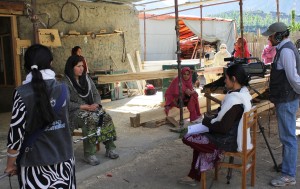
In the backdrop of snow covered mountains and open skies, a group of youngsters can be seen carefully managing the camera while an energetic female student balances a boom pole near their subject. The subject is a female carpenter who sits shyly in front of the citizen journalists, ready to be interviewed on tape. A number of other female carpenters are sawing wood in the background.
As the director shouts roll, the pupils begin their interview with supervision from the organizers of the project.
Numerous Organizers and trainers most of them U.S State Department alumni– including Majid Ali Khan, Hina Farman, Atif Ahmed Qureshi, Manzoor Alam, Samiullah Qara Baig, Najeebullah, Naveedullah Baig, Faiza Iqtidar, Sahar Naqvi and Alicia Dean all contributed to the event’s success.
“The training has been a very good experience,” said Sultana Ahsan, a participant. “My confidence in collecting visuals has dramatically increased and I have learned a lot through practical work.”
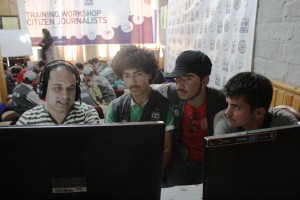
The course outline of the project included sessions on Field Reporting and Event Coverage, Script Writing, News casting/Anchoring, Production Techniques, Video Editing and Graphics, Documentary Storytelling and the Effective Use of Social Media.
The sessions took place from 9 a.m. to 6 p.m. from Monday to Saturday in the month of May, and included students ranging from 18 to over 50 years of age.
Maula Maudad works as a Tour Guide at the scenic Baltit Fort, which was built 800 years ago on a hill with a breathtaking view of Hunza Valley. He joined the project because he wanted to relate the history of the fort in a much more compelling way to its visitors and thought that storytelling classes were the best bet in helping him to achieve his objective.
“I am interested in storytelling and joined the program to gain clarity,” he said. “The project taught me how to capture shots and edit properly.”
“I enjoyed anchoring the most during the project and I received a platform to do it in a talk show that we organized,” said Nida Jafaq, another participant.
Lectures, presentations; film screenings, group work, field assignment and studio work were all part of the training, which helped introduce the students to the different forms of video shooting and production.
“I can tell if the person handling the camera is eligible to use it or not when I watch dramas, and now see them just to understand the various shots,” said Hina Alam.
March towards Community Television:
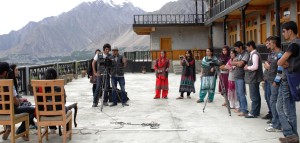
Some participants also highlighted a void in the local community that Youth Eye has the potential to fill.
Herika Bano was displaced with her family when the Attabad incident took place in Hunza. The lake was formed due to a landslide in the Attabad village which killed a number of people and blocked the flow of the Hunza River.
“If I had been trained before as a journalist, I could have informed people when the Attabad incident took place, and we might not have ended up as internally displaced people,” she lamented.
But Bano is also hopeful for the future.
“When I heard that such a project was being launched in Hunza, I left my papers and came here,” she said. “We can show the world that there is no war here and we are living together peacefully in Hunza.”
The closing ceremony of the venture took place at the Pakistan-U.S Alumni Network’s Islamabad chapter reunion. Amin Muhammad and his participants took an arduous 19 hour road trip to reach the capital, but it proved to be worth it.
Deputy Chief of Mission Thomas Williams complimented the alumnus for the successful screening of his project during the event. The students were also overjoyed at the opportunity to showcase their work in Islamabad.
“It felt very good to see people watching our citizen journalism videos,” said Masooma Masum, a participant. “Some of them also came to us and asked us how we had made the videos.”
“No project of this kind had ever taken place in Hunza before,” said Abdul Rauf. “This venture has helped to bring potential journalists forward and now people know that citizens of Hunza also have talent.”
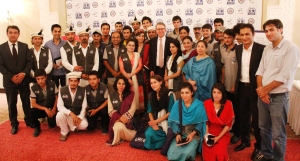
The Islamabad trip also included a visit to the local park for the students, where the recording of a live PTV show was going on, so that they experienced how a professional shoot takes place.
As for Muhammad Amin, he feels that this is not the end of Youth Eye Citizen Journalist project, but only the beginning as the studio that he had set up is still being used by his pupils to produce more content.
He also happily recounts that a number of the participants have gone on to become contributing reporters for local news outlets like Pamir Times and GB TV, so that they are getting hands on training in how journalism is practiced in the real world.
For the next step, Muhammad is striving to turn his initiative into a Community TV, so that his pilot can be replicated in all seven districts of Gilgit Baltistan. But for now, he feels proud and grateful at having being able to successfully give back to his community.
“Parents in our area don’t have resources to send their children to do courses but my students received this training at their doorsteps,” Muhammad said. “My pupils told me that before they could only think about doing such work, but now that they have received this training, they are very thankful.”
To find out more about Youth Eye Citizen Journalist project, check out this link:
https://www.facebook.com/YouthEyeHunza


